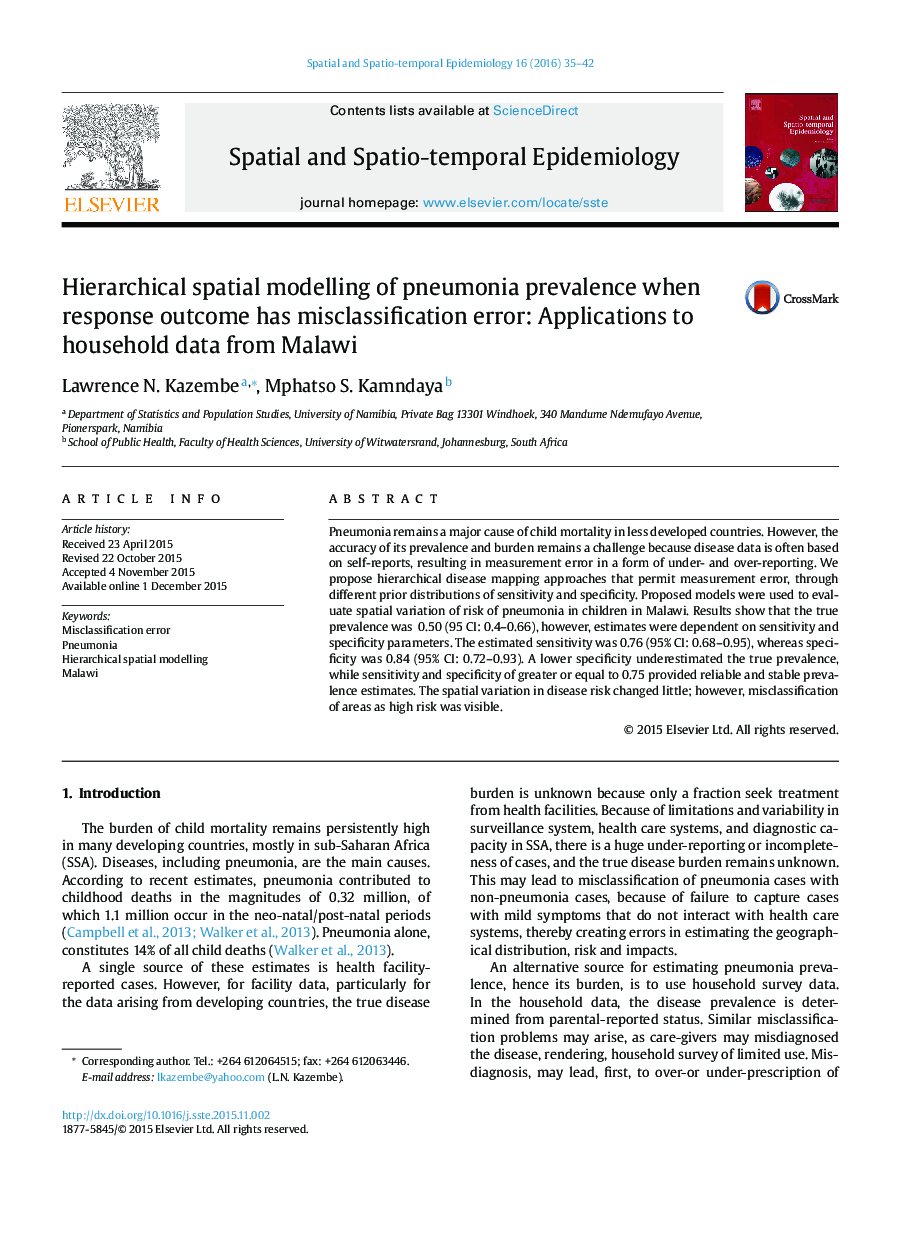| Article ID | Journal | Published Year | Pages | File Type |
|---|---|---|---|---|
| 7495993 | Spatial and Spatio-temporal Epidemiology | 2016 | 8 Pages |
Abstract
Pneumonia remains a major cause of child mortality in less developed countries. However, the accuracy of its prevalence and burden remains a challenge because disease data is often based on self-reports, resulting in measurement error in a form of under- and over-reporting. We propose hierarchical disease mapping approaches that permit measurement error, through different prior distributions of sensitivity and specificity. Proposed models were used to evaluate spatial variation of risk of pneumonia in children in Malawi. Results show that the true prevalence was 0.50 (95 CI: 0.4-0.66), however, estimates were dependent on sensitivity and specificity parameters. The estimated sensitivity was 0.76 (95% CI: 0.68-0.95), whereas specificity was 0.84 (95% CI: 0.72-0.93). A lower specificity underestimated the true prevalence, while sensitivity and specificity of greater or equal to 0.75 provided reliable and stable prevalence estimates. The spatial variation in disease risk changed little; however, misclassification of areas as high risk was visible.
Related Topics
Health Sciences
Medicine and Dentistry
Public Health and Health Policy
Authors
Lawrence N. Kazembe, Mphatso S. Kamndaya,
